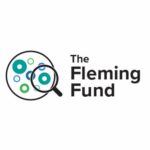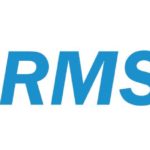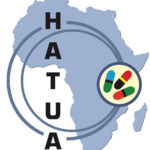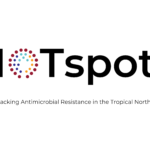Global AMR Surveillance Projects
About AMR surveillance projects and how to submit a projectAbout AMR surveillance projects
AMR surveillance projects is a database of current and past surveillance, and epidemiology of drug-resistant infections projects carried out by SEDRIC members. These projects cover a wide variety of topics, including, but not limited to surveillance, epidemiology, microbiology, mathematical modelling, diagnosis, data science, data governance, health systems, health policy, health economics, veterinary medicine, social science, policy development and public engagement.
How to submit an AMR surveillance project
Submit a project by completing the project submission form.

Culture-based and culture-independent analysis of samples (wastewater, urban wetlands, beaches, agricultural soil, raw meat, subway escalators) from within Victoria
Topic(s) Epidemiology and surveillance, Microbiology, Genomics, “One Health”
Project description
Aim:
To develop a methodology to identify previously unknown sources of AMR in environmental samples.
Methods:
(1) Antimicrobial resistance profiles of isolates with a combination of susceptibility testing with pathogen genomics. This approach will provide definitive confirmation of AMR phenotypes and link this to genotypes (e.g. specific mutations or horizontally acquired genes) conferring resistance. This will broadly involve three techniques:
i. Selective cultivation of AMR-resistant Gram-negative/postive pathogens
ii. Systematic susceptibility testing against a broad suite of antimicrobial agents
iii. Genome sequencing and annotation of antimicrobial resistance genes
(2) Metagenomics and quantitative PCR will provide a holistic view of the distribution of antimicrobial resistance genes in samples. Isolate-based profiling will capture a small proportion of the total AMR genotypes in an environment. This will involve three main approaches:
i. Unified protocols for processing and DNA extraction from diverse sample types
ii. Quantification against panel of common AMR genes using TaqMan array cards
iii. Metagenomic sequencing and genome assembly to profile antimicrobial resistome
Funding and affiliations
Centre to Impact AMR, Monash University

The CINAMR (Clinical Information Network-Antimicrobial Resistance) Project: A pilot microbialsurveillance using hospitals linked to regional laboratories in Kenya
Topic(s) Epidemiology and surveillance, Microbiology
Project description
The current level of surveillance available in sub-Saharan countries such as Kenya does not provide insight into
the cause, type, scale, nor spread of antimicrobial resistance. Current antibiotic prescribing is largely based on empiric and may be influenced by marketing, opinion leaders, and patient pressure rather than evidence or surveillance data. Through this study we propose to build on an existing collaboration, the Clinical Information Network (CIN), to pilot microbiological surveillance using a “hub-and-spoke” model with high
quality regional microbiology laboratories (KEMRI centres) linked to multiple hospitals, which could be scalable in an LMIC setting. The aim is to explore the feasibility, and utility of periodic survey sampling across multiple public hospitals to inform antibiotic stewardship, and as an interim step to development of better national laboratories linked to routine surveillance.
Funding and affiliations
KEMRI-Wellcome Trust Research Programme

Molecular epidemiology of carbapenemase-producing Enterobacteriaceae (CPE) circulating in the public healthcare sector in KwaZulu-Natal, South Africa (2013-2023)
Topic(s) Epidemiology and surveillance, Microbiology, “One Health”
Project description
Multi-drug resistant (MDR) organisms are a global phenomenon that threatens the future management of serious infections. Infections caused by CPE, have emerged as one of the world’s greatest health threats. A few published studies report the existence of CPE in Africa but in general, there is no complete surveillance dataset that describes the molecular epidemiology of CPE and its burden on the African health care system. Surveillance cultures are recommended for detecting CPE as the prompt identification of CPE carriers forms an integral part of the interventional strategies and infection control measures required to curb the global threat of hospital infections due to CPE.
Aims
1. To determine the molecular epidemiology of CPE in KwaZulu-Natal over a 10 year period (January 2016- December 2026).
2. To establish the prevalence of CPE within a specific geographical location in Africa.
3. To determine the most prevalent CPE in KwaZulu-Natal, South Africa.
Study implications
1. To provide scientific evidence to determine the molecular epidemiology and geographical distribution of CPE in KwaZulu-Natal, South Africa.
2. The evidence generated will assist in informing future empiric antibiotic prescribing for suspected CPE infections. Newer antibiotic agents are active against certain CPE molecular types.
Funding and affiliations
1. Institute Mérieux-ICAN Young Investigator Award in Antimicrobial resistance (AMR).
2. Department of Medical Microbiology, School of Laboratory Medicine and Medical Sciences, College of Health Sciences, University of KwaZulu-Natal, Durban, South Africa
National Health Laboratory Service, Durban, South Africa

Fellowship project on Antimicrobial Resistance Surveillance
Topic(s) Epidemiology and surveillance, Microbiology
Project description
Fellowship project aimed to strengthen competency in AMR surveillance system design and evaluation and also strengthen the collection and flow of AMR data from human health laboratories and the maintenance of a national human AMR database.
Relevant stakeholders (Microbiology laboratories) were identified after initial surveys on baseline capacity of the laboratory, that can serve as sentinel sites for AMR data collection and could be added for National AMR surveillance network. Capacity building plan was developed to support selected sentinel laboratories. Briefly, support of laboratories through laboratory assessment; oversight of and training on Laboratory Quality Management System, Microbiology laboratory techniques, and laboratory data management using WHONET software; facilitate participation in EQA schemes; provision of quality control strains has been provided as planned.
Within sentinel laboratories selected under this project, there are two mechanisms that developed for AMR data collection and will be implemented for collection of data;
A data collection model named as “AMR – Easy Automated Realtime Surveillance (AMR-EARS) by using Cloud Computing” was created to collect data from those laboratories who started using WHONET software for data management.
Fellowship project was a great learning experience and it has contributed towards learning and practical experience on the subject matter.
Funding and affiliations
Project was funded by Fleming Fund, UK Aid
UK Department of Health & Social Care.
America Society for Microbiology was host institute and provided technical support for implementation of project.

Malawi Country Grant 1
Topic(s) Epidemiology and surveillance, “One Health”
Project description
he objectives are developed and agreed in close collaboration with members of the Government of Malawi.
-Strengthen One Health governance structure for AMR, antimicrobial use (AMU) and antimicrobial consumption (AMC) surveillance
-Strengthen AMR surveillance systems in the human health sector
-Strengthen AMR surveillance systems in the animal health sector
Funding and affiliations
UK Aid
UK Department of Health & Social Care

Eswatini Country Grant 1
Topic(s) Epidemiology and surveillance, “One Health”
Project description
The objectives are developed and agreed in close collaboration with the Government of Eswatini.
– the AMRCC is strengthened to oversee and monitor AMR, antimicrobial use (AMU) and antimicrobial consumption (AMC) surveillance across sectors
– Improved country capacity for AMR and AMU / AMC surveillance in the human health sector
– Improved country capacity for AMR and AMU / AMC surveillance in the animal health sector
Funding and affiliations
UK Aid
UK Department of Health & Social Care

Laos Country Grant 2
Topic(s) Epidemiology and surveillance, “One Health”
Project description
The objectives are developed and agreed in partnership with the Government of Laos.
Strengthen capacity and resources towards sustainability of efforts on AMR and AMU surveillance
Sustain existing services and expand AMR surveillance in the human health sector
Sustain existing services and expand AMR surveillance in the animal health sector
Funding and affiliations
UK Aid
UK Department of Health & Social Care

Myanmar Country Grant 2 (Human Health)
Topic(s) Epidemiology and surveillance, “One Health”
Project description
The objectives are developed and agreed in partnership with the Government of Myanmar.
– To increase the capacity of the National Health Laboratory (NHL) to act as the national AMR reference laboratory.
– To increase the bacteriology capacity of several major hospital-based laboratories for services delivered to patients.
– To strengthen the laboratory network under the leadership of NHL as reference laboratory, in collaboration with WHO and all the laboratory partners within region as well as internationally.
– To improve national data collection and dissemination of AMR data to represent the burden of AMR prevalence through the laboratory network.
– To improve antimicrobial stewardship (AMS) at the selected hospital sites according to WHO standards
Funding and affiliations
UK Aid
UK Department of Health & Social Care

Bangladesh Country Grant 1
Topic(s) Epidemiology and surveillance, “One Health”
Project description
The objectives are developed and agreed in partnership with the Government of Bangladesh:
– Finalise the national and sector specific surveillance strategy, with detailed workplan for the implementation phase
– Strengthen the multisectoral governance of AMR, AMC and AMU surveillance, with a one health approach
– Strengthen AMR surveillance system in the human health sector
– Strengthen AMR surveillance in terrestrial animals
– Strengthen AMR surveillance in the aquatic sector.
– Strengthen AMC and AMU surveillance in human, animal and aquaculture sectors
Funding and affiliations
UK Aid
UK Department of Health & Social Care

Molecular Epidemiology and Antimicrobial Resistance Determinants of Neisseria gonorrhoeae in Kampala, Uganda
Topic(s) Genomics, Epidemiology and surveillance
Project description
The project aim is to elucidate the genomic epidemiology and antimicrobial resistance determinants associated with NG among the strains circulating in Kampala Uganda. The specific aims are as follows;
• To describe the NG AMR Surveillance Programme in Kampala, Uganda and the emerging phenotypic antimicrobial susceptibility data generated using E-test
• To determine the genomic epidemiology of NG strains circulating in Kampala, Uganda using WGS and compare findings with behavioural, demographic and clinical data
• To identify the molecular AMR determinants associated with decreased susceptibility and/or resistance to NG using WGS and correlate with phenotypic data
Whole-genome sequencing of presumably the largest biorepository of NG isolates (n=1356) on the African continent will give an unprecedented snapshot into the genomic diversity of the organism in our settings and possibly unveil unknown AMR mechanisms.
Funding and affiliations
Infectious Diseases Institute, Makerere University Kampala Uganda
WHO Collaborating Centre for Gonorrhoea and other STIs, Orebro, Sweden

Indonesia Country Grant 1
Topic(s) Epidemiology and surveillance, “One Health”
Project description
The objectives are developed and agreed in partnership with the Government of Indonesia.
– strengthen multisectoral One Health antimicrobial resistance (AMR) and antimicrobial use (AMU) surveillance
– strengthen AMR and AMU surveillance in humans
– strengthen AMR and AMU surveillance in poultry
– strengthen AMR and AMU surveillance in aquaculture
Funding and affiliations
UK Aid
UK Department of Health & Social Care

Kenya Country Grant 1
Topic(s) Epidemiology and surveillance, “One Health”
Project description
The objectives are developed and agreed in partnership with the Government of Kenya.
– strengthen One Health governance structure for AMR, antimicrobial use (AMU) and antimicrobial consumption (AMC) surveillance.
– strengthen AMR and AMU/AMC surveillance system in the human health sector.
– strengthen AMR and AMU/AMC surveillance system in the animal health sector.
Funding and affiliations
UK Aid
UK Department of Health & Social Care

resistancebank.org, an open access repository for surveys of antimicrobial resistance in animals
Topic(s) Epidemiology and surveillance, Public/Global health
Project description
1. resistancebank.org is an open-access repository for surveys of antimicrobial resistance in animals. Data can be downloaded or uploaded by scientists conducting field surveys. The goal of resistancebank is to provide an evidence base to prioritize the allocation ressources against the rise of AMR in low- and middle-income countries.
2. Literature reviews of point prevalence surveys combined with geospatial modeling
3. Global increase in the resistance levels in chicken and pigs
Funding and affiliations
1.
Swiss National Science Foundation
Branco Weiss Foundation
2.
ETH Zurich
Center for Diseases Dynamics Economics and Policy

Myanmar Country Grant 1 (Animal Health)
Topic(s) Epidemiology and surveillance, “One Health”
Project description
The objectives are developed and agreed in partnership with the Government of Myanmar.
antimicrobial usage in the poultry sector is better understood
farm-level antimicrobial stewardship policy and AMU practices are improved
Myanmar’s farm AMR surveillance capacity is developed
Funding and affiliations
UK Aid
UK Department of Health & Social Care

SEQAFRICA – Extending whole genome sequencing capacity for AMR surveillance
Topic(s) Epidemiology and surveillance, Infectious disease, Genomics, “One Health”
Project description
SEQAFRICA has established and currently support a consortium of three regional sequencing centers in Nigeria (University of Ibadan, UI), Tanzania (Kilimanjaro Clinical Research Institute, KCRI) and South Africa (National Institute for Communicable Diseases, NICD), and a national center in Ghana (Noguchi Memorial Institute for Medical Research, NMIMR).
SEQAFRICAs objectives are to develop and support WGS and bioinformatics capacity for antimicrobial resistance (AMR) surveillance across Africa as well as contribute to the global pandemic surveillance efforts of SARS-CoV-2. The centers in the consortium provides WGS and data analysis services and support investigation of outbreaks, unusual resistance phenotypes, and/or delineation of the flow of organisms/genes across human, animal, agricultural and aquaculture sectors.
SEQAFRICAs sequencing efforts focus on a set of key pathogens which includes non-tuberculosis bacterial isolates of high significance to the epidemiology of antimicrobial resistance such as pan-drug resistant (PDR) strains, Streptococcus pneumoniae or strains isolated in the context of an outbreak of antibacterial resistance. In addition, select collections of already available nontyphoidal Salmonella and Escherichia coli with atypical antimicrobial resistance profile as well as S. Typhi and Vibrio cholera in general, is also considered important for increased knowledge of antimicrobial resistance and circulating or emerging clones.
Funding and affiliations
SEQAFRICA is led by the Research Group for Global Capacity Building at the National Food Institute, Technical University of Denmark and is funded through a Regional Grant by The Fleming Fund. The Fleming Fund is a £265 million UK aid investment to tackle antimicrobial resistance in low- and middle-income countries around the world. The programme is managed by the UK Department of Health and Social Care, in partnership with Mott MacDonald, the Fleming Fund Grants Management Agent for the Country and Regional Grants and Fellowship Programme.

SEQAFRICA – Extending whole genome sequencing capacity for AMR surveillance
Topic(s) Epidemiology and surveillance, Infectious disease, Genomics, “One Health”
Project description
SEQAFRICA has established and currently support a consortium of three regional sequencing centers in Nigeria (University of Ibadan, UI), Tanzania (Kilimanjaro Clinical Research Institute, KCRI) and South Africa (National Institute for Communicable Diseases, NICD), and a national center in Ghana (Noguchi Memorial Institute for Medical Research, NMIMR).
SEQAFRICAs objectives are to develop and support WGS and bioinformatics capacity for antimicrobial resistance (AMR) surveillance across Africa as well as contribute to the global pandemic surveillance efforts of SARS-CoV-2. The centers in the consortium provides WGS and data analysis services and support investigation of outbreaks, unusual resistance phenotypes, and/or delineation of the flow of organisms/genes across human, animal, agricultural and aquaculture sectors.
SEQAFRICAs sequencing efforts focus on a set of key pathogens which includes non-tuberculosis bacterial isolates of high significance to the epidemiology of antimicrobial resistance such as pan-drug resistant (PDR) strains, Streptococcus pneumoniae or strains isolated in the context of an outbreak of antibacterial resistance. In addition, select collections of already available nontyphoidal Salmonella and Escherichia coli with atypical antimicrobial resistance profile as well as S. Typhi and Vibrio cholera in general, is also considered important for increased knowledge of antimicrobial resistance and circulating or emerging clones.
Funding and affiliations
SEQAFRICA is led by the Research Group for Global Capacity Building at the National Food Institute, Technical University of Denmark and is funded through a Regional Grant by The Fleming Fund. The Fleming Fund is a £265 million UK aid investment to tackle antimicrobial resistance in low- and middle-income countries around the world. The programme is managed by the UK Department of Health and Social Care, in partnership with Mott MacDonald, the Fleming Fund Grants Management Agent for the Country and Regional Grants and Fellowship Programme.

SEQAFRICA – Extending whole genome sequencing capacity for AMR surveillance
Topic(s) Epidemiology and surveillance, Infectious disease, Genomics, “One Health”
Project description
SEQAFRICA has established and currently support a consortium of three regional sequencing centers in Nigeria (University of Ibadan, UI), Tanzania (Kilimanjaro Clinical Research Institute, KCRI) and South Africa (National Institute for Communicable Diseases, NICD), and a national center in Ghana (Noguchi Memorial Institute for Medical Research, NMIMR).
SEQAFRICAs objectives are to develop and support WGS and bioinformatics capacity for antimicrobial resistance (AMR) surveillance across Africa as well as contribute to the global pandemic surveillance efforts of SARS-CoV-2. The centers in the consortium provides WGS and data analysis services and support investigation of outbreaks, unusual resistance phenotypes, and/or delineation of the flow of organisms/genes across human, animal, agricultural and aquaculture sectors.
SEQAFRICAs sequencing efforts focus on a set of key pathogens which includes non-tuberculosis bacterial isolates of high significance to the epidemiology of antimicrobial resistance such as pan-drug resistant (PDR) strains, Streptococcus pneumoniae or strains isolated in the context of an outbreak of antibacterial resistance. In addition, select collections of already available nontyphoidal Salmonella and Escherichia coli with atypical antimicrobial resistance profile as well as S. Typhi and Vibrio cholera in general, is also considered important for increased knowledge of antimicrobial resistance and circulating or emerging clones.
Funding and affiliations
SEQAFRICA is led by the Research Group for Global Capacity Building at the National Food Institute, Technical University of Denmark and is funded through a Regional Grant by The Fleming Fund. The Fleming Fund is a £265 million UK aid investment to tackle antimicrobial resistance in low- and middle-income countries around the world. The programme is managed by the UK Department of Health and Social Care, in partnership with Mott MacDonald, the Fleming Fund Grants Management Agent for the Country and Regional Grants and Fellowship Programme.

Future-proofing Antibacterial resistance Risk Management – Surveillance and Stewardship in the Argentinian Farming Environment
Topic(s) “One Health”, Epidemiology and surveillance, Microbiology, Policy, Genomics, Other
Project description
The premise of the FARMS-SAFE project is that, as well as providing better surveillance information for AMR and antimicrobial usage, will address this issue by exploring four key risk areas via an UK/Argentinian research consortium:
1. Animal disease as driver of AMR risk to identify why farmers use antimicrobials in the context of animal disease.
2. Animal husbandry practice as driver of AMR risk to identify what farm management practices are being employed that influence antimicrobial use (AMU) and will perform surveillance of antibiotics usage on farms in Argentina.
3. Farm waste management as driver of AMR risk. The team will perform surveillance of AMR bacteria with clear potential to affect human health on farms in the near-farm environment and will measure the levels of antimicrobials and other chemicals in the near-farm environment. The team will correlate AMR with antimicrobial usage and will identify management risk factors for AMR and antimicrobial contamination in the environment.
4. Regulatory capacity as driver of AMR risk. To identify key individuals and organisations involved in regulation of AMR and work with them to develop tools that can be used to regulate in a way that is informed by the risks that drive AMR.
Funding and affiliations
FARMS-SAFE Project is funded by The Global AMR Innovation Fund (GAMRIF) which supports early-stage innovative research in underfunded areas of antimicrobial resistance (AMR) research and development for the benefit of people in low and middle income countries (LMICs).
The funds have been granted through the Department of Health and Social Care of England, UK Research and Innovation (UKRI), UK Aid and Consejo Nacional de Investigaciones Científicas y Técnicas de Argentina (CONICET)

SEQAFRICA – Extending whole genome sequencing capacity for AMR surveillance
Topic(s) Epidemiology and surveillance, Infectious disease, Genomics, “One Health”
Project description
SEQAFRICA has established and currently support a consortium of three regional sequencing centers in Nigeria (University of Ibadan, UI), Tanzania (Kilimanjaro Clinical Research Institute, KCRI) and South Africa (National Institute for Communicable Diseases, NICD), and a national center in Ghana (Noguchi Memorial Institute for Medical Research, NMIMR).
SEQAFRICAs objectives are to develop and support WGS and bioinformatics capacity for antimicrobial resistance (AMR) surveillance across Africa as well as contribute to the global pandemic surveillance efforts of SARS-CoV-2. The centers in the consortium provides WGS and data analysis services and support investigation of outbreaks, unusual resistance phenotypes, and/or delineation of the flow of organisms/genes across human, animal, agricultural and aquaculture sectors.
SEQAFRICAs sequencing efforts focus on a set of key pathogens which includes non-tuberculosis bacterial isolates of high significance to the epidemiology of antimicrobial resistance such as pan-drug resistant (PDR) strains, Streptococcus pneumoniae or strains isolated in the context of an outbreak of antibacterial resistance. In addition, select collections of already available nontyphoidal Salmonella and Escherichia coli with atypical antimicrobial resistance profile as well as S. Typhi and Vibrio cholera in general, is also considered important for increased knowledge of antimicrobial resistance and circulating or emerging clones.
Funding and affiliations
SEQAFRICA is led by the Research Group for Global Capacity Building at the National Food Institute, Technical University of Denmark and is funded through a Regional Grant by The Fleming Fund. The Fleming Fund is a £265 million UK aid investment to tackle antimicrobial resistance in low- and middle-income countries around the world. The programme is managed by the UK Department of Health and Social Care, in partnership with Mott MacDonald, the Fleming Fund Grants Management Agent for the Country and Regional Grants and Fellowship Programme.

resistancebank.org, an open-access repository for surveys on antimicrobial resistance in animals
Topic(s) Epidemiology and surveillance, Infectious disease, Public/Global health
Project description
Antimicrobial resistance (AMR) is a growing threat to the health of humans and animals that requires global actions. In low- and middle-income countries (LMICs), demand for meat is rising, and developing policies against AMR is urgent. However, surveillance of AMR in LMICs is at best nascent. In the short term, efforts to target investments in LMICs against AMR could be informed by point-prevalence surveys (PPS). In the absence of systematic surveillance systems, PPS could be used to document trends in AMR in food animals.
We present resistancebank.org, an online platform that centralizes information on AMR in animals from 1,653 PPS from LMICs. PPS were conducted between 2000 and 2019 and include 30,319 resistance rates for pathogens isolated from livestock. The platform was developed as an online shiny application using the R programming language, and it is accessible from all major web browsers at https://resistancebank.org. The platform provides access to individual PPS, complete and filtered databases, country-level reports, and AMR maps at 10×10 kilometers resolution. The goals of the platform are to summarise current knowledge on AMR in animals and to provide a tool for strengthening its evidence-based surveillance by allowing users to upload additional PPS in the future.
Funding and affiliations
Funding organisations:
Branco Weiss Fellowship (https://brancoweissfellowship.org)
Swiss National Science Foundation (https://www.snf.ch/en)
Affiliations:
ETH Zürich
Center for Disease Dynamics, Economics and Policy, New Delhi, India

Laos Country Grant 1
Topic(s) Epidemiology and surveillance, “One Health”
Project description
The objectives are developed and agreed in partnership with the Government of Laos.
strengthen the One Health approaches to information sharing
strengthen the AMR and AMU surveillance system in the human health sector
strengthen the AMR and AMU surveillance system in the animal health sector
Funding and affiliations
UK Aid
UK Department of Health & Social Care

Bhutan Country Grant 1
Topic(s) Epidemiology and surveillance, “One Health”
Project description
The objectives are developed and agreed in partnership with the Royal Government of Bhutan.
– establish a One Health governance structure that spearheads the activities of AMR and AMU surveillance
– strengthen AMR and AMU surveillance in humans
– strengthen AMR and AMU surveillance in food animal
Funding and affiliations
UK Aid
UK Department of Health & Social Care

Transmission pathway of antimicrobial resistance (AMR) in Ethiopia- A One Health Approach
Topic(s) “One Health”, Epidemiology and surveillance
Project description
Project description
A major knowledge gap exists in understanding the transmission pathway of the gut colonization with AMR bacteria between healthy humans and their animals in addition to the presence of those AMR bacteria in the surrounding environment. A One Health (OH) approach is necessary to address this multisectoral problem. Again, an integrated and user-friendly OH platform to collect and utilize the surveillance data is equally important. There are existing challenges of real time data entry and transfer with resource management and communication among the OH stakeholders at the implementation phase of AMR surveillance in many developing countries.
Aims and methods
This cross-sectional, mixed-method OH study design will be carried out to assess the prevalence and risk factors associated with multi-drug resistant Gram-negative bacteria (MDRGN) and Vancomycin resistant enterococci (VRE) in humans, animals (cattle) and the environment and to understand the acceptability of an integrated AMR surveillance platform based on the District Health Information Software-2 (DHIS2) and the feasibility of its context-specific establishment.
Study implications
This project will contribute to capacity building and evidence generation for implementation of a continuous, systematic OH-AMR surveillance system in Ethiopia.
Funding and affiliations
Partner Institutions
1. University of Oslo, Norway
2. Jimma University, Ethiopia
Funding:
3. Centre for Global Health, University of Oslo, Norway
4. DIKU (Norwegian Agency for International Cooperation and Quality Enhancement in Higher Education) through EXCEL-SMART grant.

A Clinically Oriented antimicrobial Resistance Network – Cambodia
Topic(s) Epidemiology and surveillance, Microbiology
Project description
The major aim of this project is to develop and test a comprehensive data capture system for patient-focussed AMR surveillance in LMIC settings. Data collected will expand on the pathogen-focussed WHO Global Antimicrobial Resistance Surveillance System to enable accurate classification of infection syndromes and outcomes. These data will be of critical importance to estimate syndromic and/or pathogen outcomes and associated costs: i.e. how many people die from DRIs and how much does it cost?
Funding and affiliations
Wellcome Trust

A Clinically Oriented antimicrobial Resistance Network – Laos
Topic(s) Epidemiology and surveillance, Microbiology
Project description
The major aim of this project is to develop and test a comprehensive data capture system for patient-focussed AMR surveillance in LMIC settings. Data collected will expand on the pathogen-focussed WHO Global Antimicrobial Resistance Surveillance System to enable accurate classification of infection syndromes and outcomes. These data will be of critical importance to estimate syndromic and/or pathogen outcomes and associated costs: i.e. how many people die from DRIs and how much does it cost?
Funding and affiliations
Wellcome Trust
MORU Mahidol Oxford Tropical Medicine Research Unit

A Clinically Oriented antimicrobial Resistance Network – Vietnam
Topic(s) Epidemiology and surveillance, Microbiology
Project description
The major aim of this project is to develop and test a comprehensive data capture system for patient-focussed AMR surveillance in LMIC settings. Data collected will expand on the pathogen-focussed WHO Global Antimicrobial Resistance Surveillance System to enable accurate classification of infection syndromes and outcomes. These data will be of critical importance to estimate syndromic and/or pathogen outcomes and associated costs: i.e. how many people die from DRIs and how much does it cost?
Funding and affiliations
Wellcome Trust

Minimal Genomics Laboratory for Antimicrobial Resistance Surveillance and Diagnostics in Remote Rural African Settings
Topic(s) Epidemiology and surveillance, Genomics
Project description
Antimicrobial resistance (AMR) surveillance largely uses tertiary care sentinel sites, particularly in Africa. We hypothesize that rural and provincial AMR surveillance can be offered cost-effectively using portable nanopore sequencing at sentinel sites. We are developing a protoytype for a minimal bacterial genomics lab for surveillance and diagnostics in low-income remote settings.
Funding and affiliations
Funding
Grand Challenges, an initiative of the Bill & Melinda Gates Foundation
Affiliations
Faculty of Pharmacy, University of Ibadan, Ibadan, Oyo State, Nigeria
College of Medicine, University of Ibadan, Ibadan, Oyo State, Nigeria
Dept Infectious Diseases, Central Clinical School, Monash University
Dept Infection Biology, London School of Hygiene and Tropical Medicine

Prevalence and antimicrobial resistance of Salmonella in slaughtered animals in Pakistan
Topic(s) Microbiology, Epidemiology and surveillance
Project description
Project Aims:
The current study was proposed to assess and quantify the burden of AMR Salmonella in food animals slaughtered at different abattoirs of the country.
Methodology:
In total 494 recto-anal mucosal swabs (RAMS) were collected from slaughtered animals in Pakistan. RAMS were subjected to pre-enrichment in buffered peptone water and then to selective enrichment in Muller Kaufmann broth with brilliant green and Novobiocin (MKTTN). After enrichment, the samples were inoculated onto Xylose Lysine Deoxycholate (XLD) and brilliant green agar for isolation of Salmonella. Suspected Salmonella colonies were identified and confirmed using biochemical tests and PCR for the invA gene. The antimicrobial susceptibility of Salmonella isolates against 17 different antibiotics (from 8 different antimicrobial groups) was performed using the Kirby-Bauer Disk Diffusion method.
Results:
In total 59 (11.94%) Salmonella isolates were recovered from 494 RAMS collected from slaughtered animals. All the Salmonella isolates were resistant to penicillin, cephradine, and lincomycin, followed by streptomycin (91%), neomycin and cefoxitin (86%), doxycycline (59%), enrofloxacin, imipenem and ampicillin (36%), cefepime and cefixime (23%), amoxicillin/clavulanic acid and ciprofloxacin (18%), gentamycin and aztreonam (9%). All of Salmonella isolates were multidrug-resistant (MDR) while 30% of isolates were extensively drug-resistant (XDR).
Funding and affiliations
This project was funded by International Foundation for Science (IFS), Sweden.

Antimicrobial Resistance in Communities and Hospitals in Kenya
Topic(s) Epidemiology and surveillance
Project description
The Antimicrobial Resistance in Communities and Hospitals (ARCH) study employs a cross-sectional design to investigate the prevalence and risk factors for colonization with multi-drug resistant organisms (MDRO) in the community and among hospitalized patients in urban and rural sites in Kenya. At these sites, 768 adults and 768 children are enrolled in the community, and 509 patients (total) are enrolled at hospital sites over a 12-month period. During enrollment, household and/or participant interviews are conducted and samples (stool/rectal swabs and nasal swabs) collected from consenting participants. Samples are tested for three MDROs i.e. extended-spectrum cephalosporin-resistant Enterobacteriaceae (ESCrE) and carbapenem-resistant Enterobacteriaceae (CRE) from stool samples, and methicillin-resistant Staphylococcus aureus (MRSA) from nasal swabs. Study data will be analyzed to estimate the prevalence and risk factors for colonization with ESCrE, CRE and MRSA in these settings, and to determine the degree of genetic relatedness between MDROs in community and hospital sites.
Funding and affiliations
Funding institution
US Centers for Disease Control and Prevention
Collaborating institutions:
1. Centers for Disease Control and Prevention, Kenya
2. Kenya Medical Research Institute, Kenya
3. Ministry of Health, Kenya
4. University of Nairobi Institute of Tropical and Infectious Diseases, Kenya
5. US Centers for Disease Control and Prevention, US
6. Washington State University, US
7. Washington State University Global Health – Kenya, Kenya

HATUA: Holistic Approach to Unravel Antibacterial Resistance in East Africa
Topic(s) Epidemiology and surveillance, Policy
Project description
HATUA is an interdisciplinary study which is exploring the burden and drivers of antibacterial resistance associated with urinary tract infections (UTIs) across East Africa. Whilst the biological drivers of ABR in pathogens are well explored, the extent to which these are modulated by human behaviour in and around antibiotics is less understood. The consortium brings together clinical microbiological, pathogen genomic, social science and modelling data to create a unique combined ABR data set. The project established a surveillance network across Uganda, Kenya and Tanzania and recruited 1800 UTI positive patients from nine study areas. We also conducted quantitative interviews in the clinic, and the homestead, and recorded the treatment seeking behaviour of individuals. Whole genome sequencing will be used to characterize the pathogens we isolate from the patients, investigating their evolution and the genetic basis of resistance in UTI causing bacteria. Using the combined dataset , we will construct patient pathways that capture the treatment-seeking and antibiotic-use behaviour for our cohort. We aim to identify ways in which people can be influenced to follow more antibiotic friendly pathways, and disrupt the prevailing spread of ABR across the region.
Funding and affiliations
HATUA is a £2.8M, three-year Global Context Consortia Award, funded by the National Institute for Health Research (NIHR), Medical Research Council (MRC) and the Department of Health and Social Care (DHSC). The award is also part of the EDCTP2 programme.
St Andrews joins 10 partners in the Consortium:
Makerere University, Uganda
Catholic University of Health and Allied Sciences , Tanzania
Kenya Medical Research Institute, Kenya
Technical University of Mombasa, Kenya
National Museum of Kenya
Uganda Virus Research Institute, Uganda
Kilimanjaro Clinical Research Institute, Tanzania
East African Health Research Commission, Tanzania
Sanger Institute, UK
Brigham and Women’s Hospital, Harvard, USA

The Fleming Fund
Topic(s) Epidemiology and surveillance, Microbiology, Policy, “One Health”
Project description
The Fleming Fund is a £265 million UK aid programme supporting up to 24 countries across Africa and Asia to tackle antimicrobial resistance. The Fund is managed by the Department of Health and Social Care and invests in strengthening surveillance systems through a portfolio of country and regional grants, global projects and fellowship schemes.
The UK Government established the programme in 2015 in response to the UK AMR Review and the WHO Global Action Plan on AMR, which called for funding to improve AMR surveillance, public awareness and responsible drug use. The programme focuses on low- and middle-income (LMIC) countries because they are expected to bear the heaviest consequences of the spread of AMR.
Our Aims
We build partnerships across sectors, governments and organisations
We equip countries to collect and use data on drug resistance
We encourage clinicians and farmers to use antibiotics better
We encourage governments to invest in tackling antimicrobial resistance for a sustainable future
We encourage policy makers to *make AMR a policy priority”
Funding and affiliations
The project is funded by UK aid, managed by the Department of Health and Social Care, in partnership with Mott MacDonald, the Management Agent.

Pakistan AMR Surveillance Program
Topic(s) Microbiology, Epidemiology and surveillance
Project description
Pakistan AMR Surveillance Program launched since 2018, and it is aimed to collect data from tertiary care hospitals, in patient and out department patients on antibiotic susceptibility patterns from all the specimens. The project is based at national reference center for AMR and it collects data from sites through online data sharing portal. The data once at NIH is checked for quality audits and analysed. It is submitted to national and international stakeholders including GLASS
Funding and affiliations
NIH is working with WHO country office, EMRO and CDC for data surveillance and analysis.

Molecular Epidemiology of Antibiotic Resistant ESKAPE Pathogens Isolated from Public Sector Hospitals in uMgungundlovu District, KwaZulu-Natal, South Africa
Topic(s) Genomics, Epidemiology and surveillance, Infectious disease, Microbiology, Clinical
Project description
The aim of this study was to determine the risk factors, prevalence, phenotypic and genotypic profiles including but not limited to the clonal relatedness, genetic diversity and resistance mechanisms associated with ESKAPE bacteria from carriage and clinical isolates from patients in a rural, district and tertiary urban hospital within the public health sector in uMgungundlovu District, Kwazulu-Natal, South Africa.
Funding and affiliations
University of KwaZulu-Natal
National Research Foundation
South African Medical Research Council

Geospatial epidemiology of AMR in regional and rural Australia – strengthening disease surveillance and response
Topic(s) Epidemiology and surveillance, Policy
Project description
Purpose: To provide information for action to combat AMR in regional and rural Australia. The system has been shaped by the information requirements of those responsible for infection prevention and control of AMR
Design: Laboratory-based system that collates antibiotic susceptibility test (AST) data
Setting: Northern Australia, the region north of the Tropic of Capricorn
Results: We developed a surveillance platform, called HOTspots that delivers synthesised data to clinicians on evolving antimicrobial susceptibility. These data are accurate for local needs, up-to-date and readily available at point of care, which is particularly important in regional Australia. HOTspots is currently being deployed into clinical settings as an interactive and secure surveillance system that provides ongoing automated synthesis of AMR across community clinics and hospitals in northern Australia. With time, HOTspots will host increasingly more variables and will become the go-to platform to inform clinicians, program managers and policy makers. With increasingly richer longitudinal data, HOTspots will be used to measure the impact of programs and interventions – currently not feasible.
Funding and affiliations
Dr Wozniak’s fellowship is funded by the Australian Partnership for Preparedness Research on Infectious diseaSeEmergencies (APPRISE) and Menzies School of Health Research, HOT North Program

Antibiotic Resistance and One Health
Topic(s) Epidemiology and surveillance, “One Health”
Project description
The AIM of this project is to delineate the molecular epidemiology, nature and extent of ABR in human, animal and environmental health in the “One Health” context to map the fluidity of antibiotic resistant bacterial clones, antibiotic resistance genes and their associated mobile genetic elements (MGEs) within and between the human, animal and environmental health sectors to inform evidence-based strategies for its monitoring, prevention and containment by:
1. Instituting surveillance programmes on antibiotic use and resistance in human, veterinary, agricultural and environmental health,
2. Demonstrating the phenotypic and genotypic mechanisms of antibiotic resistance by sensitivity testing and appropriate screening tests together with whole genome sequencing (WGS),
3. Establishing the clonality and genetic determinants of resistance by multi-locus sequence typing and WGS respectively,
4. Ascertaining bacterial virulence factors and their genetic determinants by WGS,
5. Mobilizing relevant national government departments to improve capacities of their national systems to contain and decelerate the evolution and progress of ABR in the “One Health” context by application research output and evidence generated above.
Please see results at: https://sabihaessack.ukzn.ac.za/publications/
Funding and affiliations
South African National Research Foundation
South African Medical Research Council
United Kingdom Medical Research Council (Newton Fund)
World Health Organization (WHO)
Norwegian Agency for Development Cooperation (NORAD)
Swedish Research Council for Health, Working Life and Welfare (FORTE)

Molecular Epidemiology of Livestock-Associated Methicillin Resistant Staphylococcus aureus (LA-MRSA) and Extended-Spectrum Beta- Lactamase (ESBL)-Producing Enterobacteriaceae in the Food Chain in Cameroon and South Africa
Topic(s) “One Health”, Epidemiology and surveillance, Infectious disease, Microbiology, Public/Global health, Genomics
Project description
Despite the gaps evidenced and to the best of our knowledge, studies focusing on the direct exposure and zoonotic transmission of antibiotic resistant bacteria, especially MRSA and ESBL-PE from animals to humans have not been undertaken concomitantly in human and animal populations in Cameroon and South Africa.
This project was thus designed to estimate the prevalence and determine the phenotypic and genotypic characteristics of circulating MRSA and ESBL-PE in pigs and occupationally exposed humans in Cameroon and South Africa; this in order to improve knowledge about risks factors associated with the emergence and spread of MRSA and ESBL-PE as well as their zoonotic transmission in the food chain. Carriage, risk factors, antibiotic resistance profiles, genotypic characteristics and clonal relatedness of circulating MRSA and ESBL-PE in pigs and humans were investigated using various microbiological (selective agar, biochemical testing, VITEK 2 system) and molecular methods (REP-PCR, ERIC-PCR and whole genome sequencing) and compared with statistical tools.
Funding and affiliations
University of KwaZulu-Natal,
National Research Foundation
South African Medical Research Council

Increasing Frequencies of Antibiotic Resistant Non-typhoidal Salmonella Infections in Michigan and Risk Factors for Disease
Topic(s) Epidemiology and surveillance, Microbiology, Genomics
Project description
1. Project Aims: Determine frequencies and trends in antibiotic resistance in Non-Typhoidal Salmonella in Michigan, USA and factors associated with resistant infections.
2. Methodology: Clinical NTS (n= 198) isolates from collected via active surveillance at four Michigan hospitals from 2011 to 2014 were examined for resistance to 24 antibiotics using broth microdilution. Case information and epidemiological data for NTS isolates was extracted and statistical associations with resistant infections were determined in SAS 9.3 and EpiInfo™7.
3. Results: A total of 30 (15.2%) NTS isolates were resistant to ≥1 antibiotic and 15 (7.5%) were resistant to ≥3 antimicrobial classes; a significantly greater proportion of Typhimurium isolates were resistant compared to Enteritidis isolates and an increasing trend in the frequency of tetracycline resistance and multidrug resistance was observed over the 4-year period. Resistant infections were associated with longer hospital stays as the mean stay was 5.9 days for patients with resistant isolates relative to 4.0 days for patients infected with susceptible isolates. Multinomial logistic regression indicated that infection with serovars other than Enteritidis [Odds ratio (OR): 3.8, 95% confidence interval (CI): 1.23–11.82] as well as infection during the fall (OR: 3.0; 95% CI: 1.22–7.60) were independently associated with resistance.
Funding and affiliations
1. Funding: This work was supported by the National Institutes of Health Enterics Research Investigational Network Cooperative Research Center (U19AI090872), the Michigan State University (MSU) Foundation, and the United States Department of Agriculture (MICL02475). The Department of Microbiology and Molecular Genetics at MSU, the Ronald and Sharon Rogowski Fellowship and the MSU College of Natural Science provided student support to SM.
2. Affiliations:
Michigan State University, US
Clinical Microbiology Laboratory, University of Michigan, US
Detroit Medical Center University Laboratories, Wayne State University, Detroit, US
Microbiology, Immunology & Molecular Laboratories, Sparrow Hospital, US
Michigan Department of Health and Human Services, US

Carbapenemase-Producing Enterobacterales in Singapore (CaPES) Study Group
Topic(s) Epidemiology and surveillance
Project description
Project aims:
This project aims to determine the prevalence and characteristics of multi-drug resistance organisms with a focus on carbapenemase-producing Enterobacterales.
Methodology
This project collects clinical data and samples for whole-genome sequencing from government hospitals in Singapore
Results
Initial results are available:
Marimuthu K, Venkatachalam I, Khong WX, et al; Carbapenemase-Producing Enterobacteriaceae in Singapore (CaPES) Study Group. Clinical and Molecular Epidemiology of Carbapenem-Resistant Enterobacteriaceae Among Adult Inpatients in Singapore. Clin Infect Dis
. 2017 May 15;64(suppl_2):S68-S75. doi: 10.1093/cid/cix113.
Further results are under review.
Funding and affiliations
Singapore National Medical Research Council
Submit an AMR surveillance project
Are you working on a project in AMR surveillance and epidemiology that you would like to share with other professionals in the field?